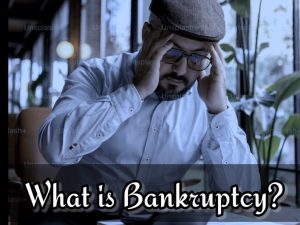Especially when one is struggling financially and has a lot of debt, navigating the intricacies of bankruptcy can be difficult. This extensive manual seeks to offer a thorough grasp of bankruptcy, its many chapters, and the associated legal procedure. This guide will provide you with all the necessary information, regardless of whether you plan to file for bankruptcy or are just looking for general information on this type of financial relief.
What is bankruptcy?
Through the legal process of bankruptcy, debts can be eliminated or reorganized, giving both people and organizations a fresh start. People can discharge their obligations through a court-supervised procedure, which releases them from their legal obligation to pay back the loans. Businesses can also arrange their finances and prevent liquidation with the aid of bankruptcies.
Table of Contents
Types of Bankruptcy
There are six main types of bankruptcy:
-
Chapter 7 Bankruptcy: This is the most common type of consumer bankruptcy, often referred to as “liquidation” bankruptcy. It involves selling off non-exempt assets to pay off creditors as much as possible, while the remaining debts are discharged.
-
Chapter 11 Bankruptcy: This type of bankruptcy is primarily used by businesses to restructure their finances and reorganize their operations. It allows businesses to continue operating while they negotiate with creditors to reduce their debts and develop a payment plan.
-
Chapter 13 Bankruptcy: This kind of bankruptcy is also referred to as “wage earner’s plan” bankruptcy. It is used by individuals who have a regular income and can afford to repay a portion of their debts over a period of time, typically three to five years.
-
Chapter 12 Bankruptcy: This type of bankruptcy is specifically designed for family farmers and fishermen who are facing financial distress. It provides a mechanism for reorganizing their debts and avoiding the liquidation of their farms or fishing operations.
-
Chapter 9 Bankruptcy: This type of bankruptcy is used by municipalities, such as cities, towns, and counties, to restructure their debts and avoid insolvency. It allows municipalities to negotiate with creditors and develop a plan for repayment.
-
Chapter 15 Bankruptcy: This type of bankruptcy is used by foreign debtors and creditors who have business dealings in the United States. It provides a process for cross-border insolvency proceedings.
When to Consider Bankruptcy
Deciding whether or not to file for bankruptcy is a significant decision that should not be taken lightly. It is important to carefully consider your financial situation and explore all other available options before resorting to bankruptcy. However, bankruptcy may be a viable option if you are facing the following circumstances:
-
You are overwhelmed with debt and cannot afford to make your monthly payments.
-
Creditors are harassing you or taking legal action against you.
-
You have lost your job or income and can no longer make ends meet.
-
You are facing foreclosure or repossession of your assets.
-
Your debt-to-income ratio is high, making it difficult to qualify for loans or refinancing.
Benefits of Filing for Bankruptcy
Filing for bankruptcy can provide several benefits, including:
-
Discharge of debts: Bankruptcy can eliminate or significantly reduce your debt burden, providing you with a fresh start.
-
Relief from creditor harassment: Once you file for bankruptcy, creditors are prohibited from contacting you or taking legal action against you.
-
Protection of assets: Bankruptcy can protect your assets from being seized by creditors.
-
Improved creditworthiness: While bankruptcy will initially have a negative impact on your credit score, it can improve over time as you demonstrate responsible financial behavior.
Drawbacks of Filing for Bankruptcy
While bankruptcy can provide significant relief from debt, it also comes with some drawbacks:
-
Impact on credit score: Bankruptcy will remain on your credit report for up to ten years, making it more difficult to qualify for loans or other forms of credit.
-
Loss of assets: In some cases, you may be required to sell some of your assets to pay off creditors.
-
Legal fees: Filing for bankruptcy involves court fees and attorney fees, which can add to your financial burden.
Consulting with a Bankruptcy Attorney
Given the complexity of bankruptcy laws and procedures, it is highly recommended to consult with an experienced bankruptcy attorney before making any decisions. A bankruptcy attorney can help you assess your situation, determine the most appropriate type of bankruptcy for your needs, and guide you through the entire bankruptcy process. They can also provide legal representation in court and negotiate with creditors on your behalf.
In summary
A strong legal instrument that may offer people and companies a fresh start and a route to financial recovery is bankruptcy.To be sure you are making the best choice for your situation, it is crucial to thoroughly weigh the ramifications of declaring bankruptcy and to speak with a knowledgeable bankruptcy attorney.You may accomplish your financial objectives and successfully navigate the bankruptcy procedure with the help of an experienced legal expert.
